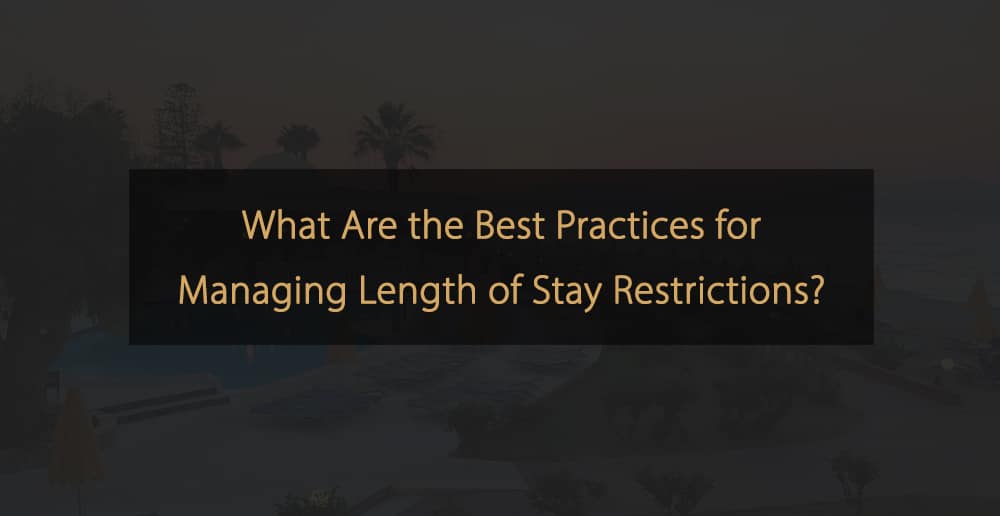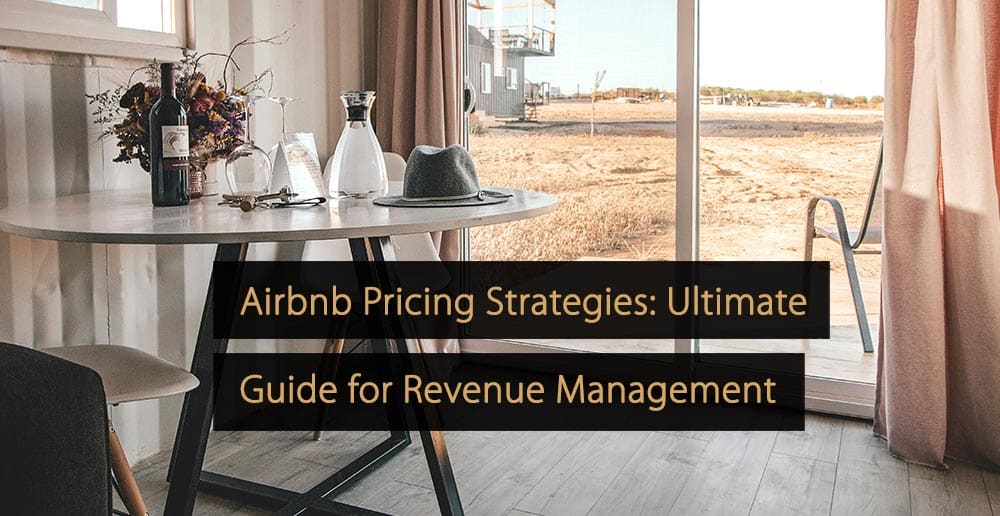Question for Our Revenue Management Expert Panel:
Rate parity continues to pose challenges for hotel revenue managers. What are the top recommendations to resolve rate parity issues? (Question proposed by Tamie Matthews)
Industry Expert Panel
Our Industry Expert Panel exists out of professionals within the hospitality & travel Industry. They have comprehensive and detailed knowledge, experience in practice or management and are forward-thinking. They are answering questions about the state of the industry. They share their insights on topics like revenue management, marketing, operations, technology and discuss the latest trends.
Our Revenue Management Expert Panel
- Pablo Torres – Hotel Consultant, TSA Solutions
- Nikolas Hall – Owner, H. Hall Consulting
- Krunal Shah – Cluster Director of Revenue, Dorsett Hospitality International
- Fabian Bartnick – Founder, Infinito
- Tanya Hadwick – Group Revenue & Yield Leader, SunSwept Resorts
- Daniel Feitosa – Revenue Management Specialist
- Silvia Cantarella – Revenue Management Consultant, Revenue Acrobats
- Heiko Rieder – Revenue Management Professional
- Massimiliano Terzulli – Revenue Management Consultant, Franco Grasso Revenue Team
- Jutta Moore – Director, Moore Hotel Consulting
- Mariska van Heemskerk – Owner, Revenue Management Works
- Nikhil Roy – Revenue Management Professional
- Sandra Gannon – Commercial Consultant, Revenue Puzzle
- Sergio Sartori – Group Senior Manager Revenue, Ruby GmbH
- Daphne Beers – Owner, Your-Q Hospitality Academy
- Yash Taneja – Revenue Manager, IHG Hotels & Reports
- Ask Our Panel a Question
- Join Our Expert Panel
“A challenging topic. Most countries are implementing regulations or laws against rate parity. However, hotels keep signing contracts that tie them to agree to never offer rates lower than those shown on a third party platform. It seems counterintuitive, but they feel forced to do it due to the sheer size of those OTAs. The solution? Dress the discounts as loyalty-related rates, or offer added value to that parity rate on your website only.”
“Rate Parity is an issue that can spark significant debate, and can be interpreted in a variety of manners. I address Rate Parity as an issue when distribution channels, other than the properts direct channel, are displaying unaligned rates for the same product (room type & stay conditions).
Rate parity issues can be caused by a variety reasons, for example:
- OTA created discounts which they take from their commission
- Rooms and rates available on non contracted sites
- Channel manager and OTA connectivity issues
The quickest way to ascertain the source of misalignment is to check your channel manager & the mapping to distribution sites, ensuring that the values in both systems are equal. For those not using a channel manager – it could be a simple question of incorrectly inputted rate data.
OTAs creating unauthorised discounts to win market share is a matter to be discussed with your partner / market manager, ensuring an end to the practice. Monitor this activity on the site, and immediately highlight your observations requesting that they stop their promotion. Non-compliance to your request should be spelled out very clearly.
One of the most challenging issues are rates being displayed on sites you have not contracted. In the distribution jungle you will need to identify the source of their rates and inventory by processing a “fake” reservation. Once the source is identified you need to highlight this with your contact at the source site, requesting they put an end to this undercutting practice.
Use Rate Parity to create a level playing field amongst your distributors as it impacts your OTA ranking, your brand image & reputation, and indirectly, your own direct bookings.”
“Rate Parity issues are an ongoing challenge and can be very difficult to handle at times. It is a time consuming task but an important one, identifying and listing all the channels where the property is sold. Mostly I have found that OTAs create discounts which are taken off from their commissions. Also, B2B partners and wholesalers might be selling the rooms back to the OTAs. Best thing is to book the rooms to check where the voucher is coming from in order to see who is selling lower rates and to whom.
Normally OTAs are creating parity issues themselves in order to improve their market share. Open pricing helps to sort most of the parity issues. Having fewer selling channels also will help reduce parity issues. Top Big Brands have slowly started moving towards having fewer channels but easy to control on rate parity.
It’s hard to resolve rate parity but you will need to negotiate terms with your offline partners as well. We use OTA insight, which is a powerful tool to overcome some of the parity issues.”
“Why should you resolve rate parity? Isn’t rate disparity a very common practice in nearly every other industry? Supermarkets, phones, petrol, electronic goods – all shy away from rate parity. Let’s look at it from a different angle as well: If you had 50% of your hotel empty and I offer you another 20% of bookings but at a disparity rate… would you take it? Of course you would.
Let´s take it even one more step forward: How many bookings did you actually get because of disparity, because all of a sudden your rate was appealing? My advice: if it’s done maliciously then switch off that channel, otherwise welcome them with open arms.”
“Often the challenge with parity is down to not contracting clearly and therefore allowing people to play with the rates, especially (and more typically) rates that are offered on a markup or margin basis; it’s less likely when the rates are commissionable after the fact.
Good contracts specify what the outcome is from breaching rate parity to stop parties from playing too much while ensuring that there is a good correlation within the rate structure to maintain parity.
Be selective about who you work with and don’t be afraid to cut ties with those who resell and manipulate your rates to their own advantage. Obviously, having a good rate shopping tool to ensure that you can spot the issues and deal accordingly is key to any resolution.”
“Hotels should be aware of their contracts and take care of reservations booked under prices/conditions that are not those set. As it’s a real threat for the business, hotels should have automated alerts on booked reservations or a “human check”, as I see that checking rooms booked on the day is a useful report needed.
When getting reservations at the time they’re made, hotels are bettwe able to understand, track and confront which partners are the gap for the parity. With this, they can take actions to solve these issues.
It is worth the hard work, but it must also be a collaborative effort with competitors and other hotels that can benefit from this information and start doing this work too. If hotels want to own and increase their business, it is an important task to look after.”
“Aknowledging the fact that rate parity issues will never be 100% solved due to the complexity around online distribution, the recommendation is always to make a test reservation in order to identify the reseller behind it.
Once you find out, make a thorough evaluation of the partner, i.e., does it bring real incremental revenue or is it just switching demand from your direct channel to a third party through the rogue rates.
Pay attention to the T&Cs in the contract and adjust if necessary, making sure that situation is win-win for both parties. Don’t commit to exclusive offers but maintain a flexible commercial strategy.”
“When discussing Rate Parity issues, we have to differentiate between those within the Revenue Manager’s immediate control and those that are caused by other powers.
There are straightforward Rate Parity issues that the Revenue Manager can directly impact, e.g., because of technical issues or incomplete setup in the channel manager. These issues can be resolved relatively easily by establishing channel, rate or room type or the pattern at which the mismatch occurs and fix it in the setup of the channel management tool. The rate parity report in the rate shopping tool will be of great help.
More difficult to tackle are mismatches caused by bedbanks or OTAs that distribute availabilities and rates out to online platforms who then modify the rate at cost of their own commission or markup to obtain a competitive advantage by selling at the lowest rates and benefit from better visibility on meta sites.
Once you have established the channel that causes the parity breach (in most cases you will need to make a test booking) and challenged your direct distribution partner with it, they will say that it’s the fault of the platform pulling the content from them and that they don’t tolerate such practice.
To get them into motion though you will need to provide some bulletproof evidence and this is what you need srceen shots from a test booking for. Best-case scenario now is that the channel causing the parity breach will be refrained by your distribution partner from selling your hotel after a few days or weeks.
For escalation it is advisable to agree a clause or an addendum to the distribution agreement which defines;
- What is the process of reporting a parity breach?
- What needs to be provided to prove a parity breach?
- How much time does the distribution partner have to get the issue resolved?
- What are the penalties?
Depending on the country of operation you may not be able to penalize your distribution partner for Rate Parity breaches.”
“First of all, we need to understand the origin of parity problems. Often they are because hotels are present on many distribution channels. The more distribution channels, the greater the risk of incurring rate leakage. Even more so if you make agreements with wholesalers who then resell the rooms to non-contracted OTAs, transforming the negotiated rates from B2B to B2C. You must read the contractual conditions very carefully before signing up with any OTA or wholesaler.
Also, you have to understand if it is really necessary to be present on so many distribution channels. More distribution channels doesn’t necessarily mean more visibility. In fact, it can mean the opposite, as conversion rate and reviews are dispersed across multiple channels, which means the property gets reduced visibility on each one of them at the end of the day. On top of that, it generates rate disparities that are difficult to control.
Today there are many tools and rate shoppers that help you monitor rate disparities and intervene promptly. Very often it’s the same OTAs that notify you (via email, phone or extranet) on disparity problems coming from other OTAs. When it happens, we should always look for the way of dialogue and diplomacy with OTAs because sometimes it is a question of disparities in good faith, and we must understand only the source of the problem to solve it. Sometimes these are intentional disparities and repeated over time, and in that case you can proceed directly to the closure of online availability as an ultimatum. If the problem persists, the channel must be deactivated and the contract terminated – and when possible, take legal proceedings.”
“Limit the number of channels you distribute to so that you can control them. Contact rate parity offenders directly to address the issue. If you have consistent offenders, weigh up whether you can cut them off altogether. Depending on where these rate parity issues persist, you may sometimes need to adjust your pricing/inventory strategy.
For example, if you have a guaranteed allotment with a wholesaler and they release unsold rooms into their distribution network at any price, you need to revisit how you contract with them.”
“First, have a clear overview of rates and channels with direct contracts to your property / organization. Ensure proper connections to your PMS and / or Channel manager are in place and all channels receive the same rates and conditions. Then ensure if you have contracts with fixed rates, that they are marked up in the correct manner and the difference with your BAR rates make sense. Often these fixed rates are causing major parity issues because they move through different channels and your normal transient rates are often dynamic and vary every day.
Try to avoid channel-specific promotions and if you are in need of promotions, analyze why you need them. Do you need more business in general? What other segments can you target? If rate drops are really the only solution, then look at your long-term strategy and make a general change. Avoid last-minute rate drops / promotions to push business.
Focus on direct web distribution and consider rewarding Loyal Guests / Members.
Lastly, rate shoppers and/or RMS can help give insight in rate parity issues. Use them to your benefit and ensure parity checks are part of regular checks by your Revenue Manager.”
“Rate Parity issues are something that hotels have been dealing for a very long time. With several distribution channels now available, it is very important for hotels to send the correct rates to each of them. It is worthwhile investing in a superior product (software) that takes care of the background work. You must keep in mind that each distribution channel has its own language and sometimes they don’t connect directly to the PMS. You must work with a CRS that has a direct connection via an API to the OTA or the distribution channel.
A few major PMS systems now offer direct connections to Booking.com and Expedia, but it is always beneficial to have a CRS do that for you! Then you can have peace of mind that your rates are consistent across channels. Another interesting point that pops up in the rate parity conversation is: “Do hotels and OTAs honour rate parity in practice?” I have seen several examples of hotels who take matter into their own hands and offer cheaper rates for direct bookers.
If you would still like to be competitive, but are bound to offer the same rate everywhere, then you could consider adding extra benefits for direct bookers such as free breakfast, a 1-hr extra for check out, free parking, complimentary access to the spa / health club, etc. You can be innovative in your own way!”
“A great resource to keep on top of rate parity issues is a rate shopper. They tend to have a feature that shops for issues. Once you see a trend, I would always recommend making a test booking, as that will reveal the source of the booking. Traditionally, the rate parity issues are fueled by bedbanks, so with the outcome of the test booking, armed contract conversations can be had.”
“First check where the rate parity issues are coming from. If it comes from the OTA, check if there are any deals loaded like member discounts or mobile discounts. Most of the time it’s resellers using flash sales to undercut the hotel’s rates. Here it is important to negotiate such deals or special rates only with a certain tour operator, so you can find out faster where the rate parity problems come from. It is also important to use a channel manager, so that the hotel can ensure that the correct rates are sent to all individual channels.”
- Investigate which partners are causing the issue. Connect with them. If they are willing to solve it and they do, keep them. If they keep crossing the line, stop working with them. Before you make the decision, analyse production and make a backup plan to sell via other channels.
- Limit the number of partners, so it is easy to track where the issues are coming from.
- Use only automated / integrated partners (no manual extranets).
- Improve your direct booking channels. Let loyalty and ease of booking stop your guests from even considering / comparing rates on other platforms. Engage and incentivise guests for booking direct.
- Have a lowest-price promise in place where guests pro-actively get a reward if they find lower rates, but book direct (does not have to be a free night). See what triggers your guests. This way you find them more easily and you are able to stop it sooner.
- Consider stopping working with all external partners or only working with one that you trust and have clear agreements with.
“You can use companies like OTA insight that provide reports on rate parity on a daily basis. The good old practice of making a test booking always helps to find the FIT/Company publishing the rates that should not be disclosed to public.”
Ask a Question & Join Our Expert Panel
Would you like a question to be answered by our Industry Expert Panel? Or would you like to join our community of experts and share your experience, insights, and knowledge with fellow industry professionals? Via the buttons below you can submit a question or submit a request to become part of our expert panel.
More Tips to Grow Your Business
Revfine.com is the leading knowledge platform for the hospitality and travel industry. Professionals use our insights, strategies, and actionable tips to get inspired, optimize revenue, innovate processes, and improve customer experience.Explore expert advice on management, marketing, revenue management, operations, software, and technology in our dedicated Hotel, Hospitality, and Travel & Tourism categories.























Leave A Comment